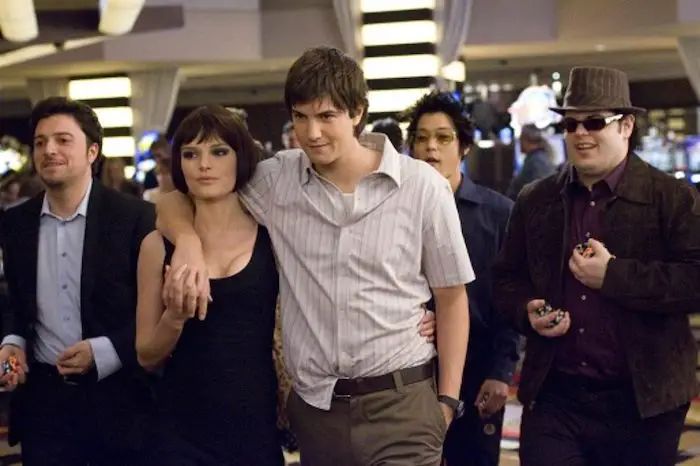
After a quarter century of film directing, Steven Soderbergh’s has chosen “Side Effects” as his alleged theatrical swan song. Teaming up once again with screenwriter Scott Z. Burns (“Contagion,” “The Informant!”), he shot and edited the film himself under assumed names. With that pedigree and level of control, I would surmise that Soderbergh made exactly the film he wanted to make. That’s why I’m so puzzled by the tonal shift that occurs right in the middle of what seemed to be a biting yet candid exploration of the anti-depressant industry. There’s giving your audience twists and turns and then there’s pulling the rug out from under them. At the end of the day, it’s Soderbergh’s prerogative. But that doesn’t mean I have to like it.
To be fair, the film’s opening is a sign of things to come. After an uncomfortably long wide shot that eventually zooms into an apartment window and finally finds a set of bloody footprints, I can’t say he didn’t warn me. But the film immediately jumps back in time three months to a story that is certainly dramatic, but not conspicuously noirish. Our protagonist is Emily Taylor (Rooney Mara, “The Girl with the Dragon Tattoo”), a frail, beguiling girl who puts on a happy face to welcome her husband home on the day of his release from prison. Martin (Channing Tatum) served four years for insider trading and his little mistake cost his family the lush life to which they had become accustomed.
Emily’s crippling depression, instigated by her husband’s arrest, but probably exacerbated by a chemical imbalance, sours their happy reunion. After all, someone in their right mind wouldn’t intentionally drive their car directly into a wall. Having miraculously survived the accident with only a couple of bruises, Emily convinces the hospital shrink, Dr. Banks (Jude Law) that it was just a momentary loss of control and not likely to happen again. He lets her go under the condition that she visits him twice a week and agrees to start a course of anti-depressants.
Emily tries the gamut of available drugs, but experiences crippling side effects with each one. Finally, several influential parties convince Dr. Banks to prescribe a new drug called Ablixa, and everything turns around for Emily. But Ablixa does cause one, very inconvenient side effect: Sleep walking. It starts with preparing midnight snacks and ends with the aforementioned bloody footprints. She always awakes with no memory of what she did while asleep. So how can she be held responsible for something a drug made her do?
Here is the possibility for a compelling courtroom drama that examines every aspect of the anti-depressant industry. And for a while the film seems to be heading in that direction, introducing the perspective of the patients, the doctors and the pharmaceutical companies. It poses several difficult questions: Is tricking our brain into being happy really the best course of action? How much does the medical community really care about what happens to their patients? How can one mistake based on improper research ruin so many lives and careers while the companies that release the drug always emerge unscathed?
Dr. Banks experiences a brief existential crisis because he really believed in the drugs. He relies on them not only in his own practice but in his personal life as well. So when the drugs fail, his belief system fails. He can’t accept the idea that his entire philosophy might be wrong and that he could actually be responsible for some very bad things. Now that’s an interesting film.
But that’s not the film we get. Quite suddenly, “Side Effects” becomes a psychological thriller. Someone is lying! It might be the beautiful, but troubled girl who was taking the drugs (I wouldn’t normally consider the character’s appearance were it not actually mentioned as a motivation in the film). Or is it the career-driven psychiatrist who prescribed them? Or maybe it’s the sexy former doctor of the troubled girl who vouched for the drug? Dr. Victoria Seibert (Catherine Zeta-Jones) sports black thick frames on her glasses with her hair in a tight bun while her constantly parted lips hint that the glasses could come off and the hair could tumble down around her shoulders at any minute (probably while her button-up shirt tears open in the heat of passion). In retrospect, Dr. Siebert is total foreshadowing for the film we end up with.
It’s difficult to get into detail about everything that goes wrong with “Side Effects” without massive spoilers. But trust me when I tell you that the mid-stream re-direction is jarring and disappointing if you were enjoying the story you thought Soderbergh was telling. The Emily of the first half is a riveting character. Lots of other actresses have portrayed depression and some have won awards for it. But those performances are generally over the top. Those women celebrate their crazy. Emily is trying desperately to get a hold of her depression. To fix herself so that she can get back to living her life. This is the more common face of depression than the one usually represented on celluloid. Mara’s performance never disappoints, but her character certainly does.
I won’t spoil whom she turns out to be, but I will say that it is nothing new in cinema and it’s not terribly flattering to women in general. Granted Soderbergh rarely lets any of his characters off the hook. He doesn’t seem to have a very high opinion of humanity on the whole.
But he sure does love a twist. The story gleefully doles them out with rapid succession in the second half, making the plot and characters more convoluted, but less complex. I guess the biggest twist is that the film started out being something I liked and ended up being something I didn’t.

